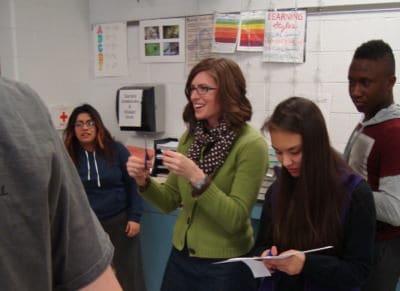Ask any teacher, especially one in a middle or high school: “What’s your school’s student attendance policy?” Inevitably, they’ll have a lot to say about the topic. We know we need our students in class so that we can ensure their success. However, we often have students that are chronically absent, defined as a student who misses 10 percent or more of school days in an academic year.
We are both high school science teachers in North Carolina. During the course of our careers, we have both experienced different attendance policies and shifts in those policies. We have spoken to dozens of educators about the issue whose experiences are consistent with our own.
These conversations make us wonder how we can have it all — rigorous academic standards for our students that prepare them for the future they wish to pursue and defined policies that support all students. To pull it off, education stakeholders must first acknowledge how tricky the issue of absenteeism is.
First and foremost, these issues are a difficult problem to solve. Chronic absenteeism is not a new, nebulous problem for public schools to tackle. If it wasn’t an issue to fix across the education system, educators and school districts wouldn’t be changing policies in attempt to find a solution. According to Attendance Works, 13 percent of all public school students in the United States miss three or more weeks of school. Chronically absent students attend both urban and rural schools, although the majority of students that experience high numbers of absences are from low-income families.
Additionally, attendance policies vary. Under ESSA, states are required to pick an achievement indicator that is “non-academic.” The majority of states have picked chronic absenteeism as their “non-academic” indicator. In North Carolina, 176 schools are classified as having “extreme” chronic absenteeism, which means 30 percent of students are chronically absent.
One factor that may contribute to chronic absenteeism is districts moving to a “no policy” policy. For example, in Durham, a high school student does not automatically fail a course after missing a certain number of class sessions. Currituck County used a similar policy, but changed it because students were passing classes even though they were missing ten or more days of class.
In our experience, schools place a higher importance on graduation rate than attendance. For example, in Durham, our graduation rate increased 17 percent between the 2008-09 school year and the 2016-17 school year. However, 18 percent of Durham’s students are chronically absent. Incentivizing the improvement of graduation rates without addressing absence issues may be contributing to chronic absenteeism.

It is also difficult to identify the root cause of the issue. It’s impossible to discuss attendance without acknowledging the many outside factors that stop a student from coming to school. Every child’s situation is unique and deserving of individualized attention. This is why zero-tolerance attendance policies can be problematic and do not address the underlying causes of chronic absenteeism.
For example, in Charlotte, if a student misses more than 10 days of school their parents can be sentenced to 120 days in jail. Although no parents have served jail time, many have had to attend parenting classes as a consequence of their student’s absences. The obstacles that are routinely easy for some students to overcome, such as non-school provided transportation and family obligations, become increasingly harder for students that come from low-income households.
At Riverside High School in Durham, students who miss six days of a class have to attend after-school sessions to make up the time. Schools in other districts have similar policies and have seen mixed results due to the challenge of accountability and additional burdens put on students that have barriers to attending school.
After everything, the teacher is often expected to solve absenteeism problems at their school. For teachers, this means building relationships with students, but that usually only uncovers the causes of absences. Chronically absent students often have inconsistent transportation with few alternatives if they miss the bus, are responsible for child/parental care, or find school extremely stressful and struggle to make it to school on a regular basis.
For example, two Riverside biology students this semester have parents with chronic diseases, and they are responsible for taking care of both the parent and younger siblings. It’s clear why the students miss at least one day of school a week, but still difficult to find a solution that will enable them to attend school every day. Further, chronically absent students are often disconnected from the academic setting of school. For example, another student routinely skipped school and and almost didn’t graduate. When asked about his attendance, he said he was not interested in attending college and didn’t see the point of going to school.
Relationships and understanding is a key aspect of our job, but without a way to remove barriers from students’ personal lives or provide skills-based training for students, teachers are not able to solve most absentee issues.
All impacted stakeholders need to determine the underlying issues of why chronic absenteeism is impacting their school or district. Like attendance and attendance policies, the solution is complicated. It must begin with honest conversations about why our students, schools, and communities need kids in class every day and how we can work to improve the current model. As advocates for our schools, students, and profession, we are committed to shedding light on this issue and starting overdue conversations which can produce policies and practices that will ensure our students’ success in the future.




